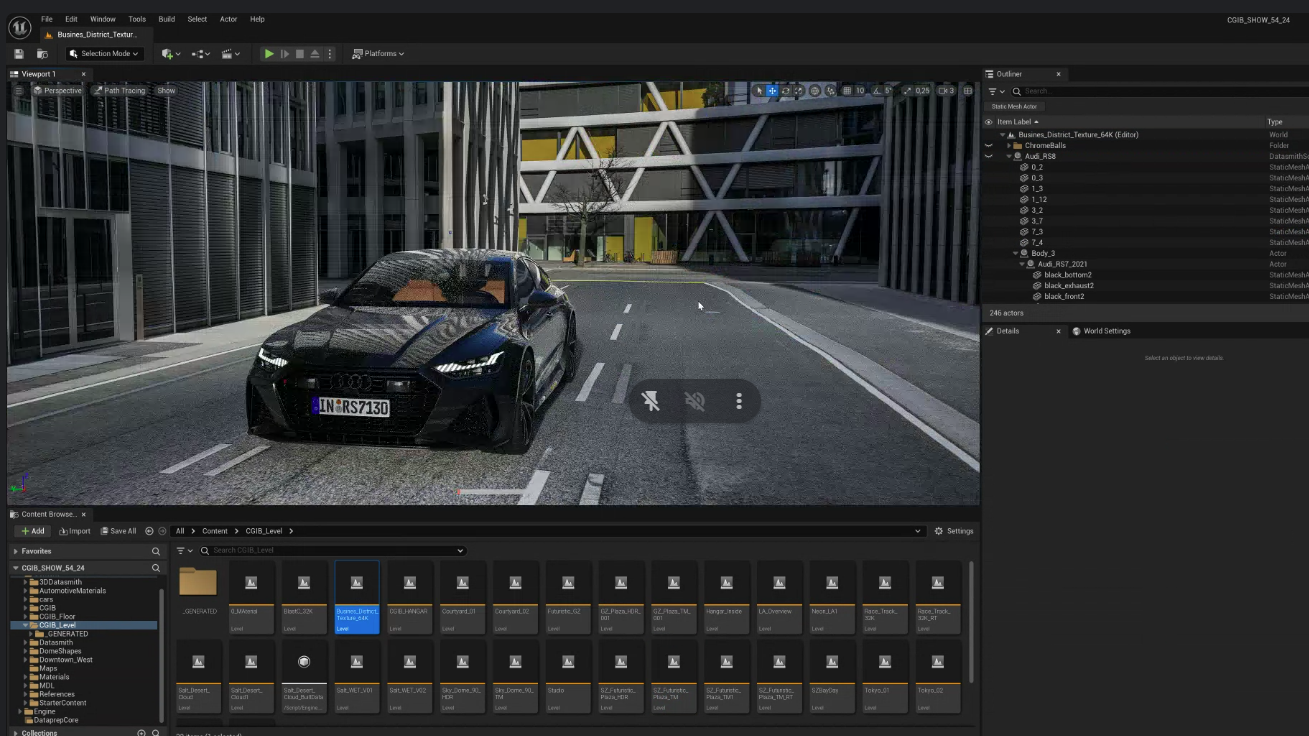2024 was a transformative year for the 3D rendering space, and 2025 promises to be even more impactful.
At CGI.Backgrounds , we work with some of the world’s biggest brands on 3D rendering and marketing workflows.
Based on our 20+ years of experience and what we’re seeing in the industry right now, here are our predictions for the 3D rendering space in 2025 and beyond.
1. Personalization Takes Center Stage

Not anymore. Today’s consumers expect personalized content that aligns with their specific needs.
In 2025, personalization will become even more critical in the buying journey. Interactive experiences localized to a user’s geography, customized to their demographics, and built to be culturally aware and resonant will be essential.
We’ve seen this trend reflected in the increased usage of our international imagery. For example, our HDRi Maps of Dubai , Paris, and China have seen an explosion in usage, suggesting that brands are tailoring their marketing campaigns to reach customers in Asia, the Middle East, Europe, and other geographies.
2. AI Finds Its Place
When generative AI emerged in 2023 and 2024, it sparked both excitement and apprehension. Many artists were concerned that AI might eventually replace their work.
However, as we enter 2025, the role of AI in the 3D rendering market has become clearer–and 3D artists can breathe a sign of relief.
While AI can create HDRi Maps and similar assets, we’ve seen it used more for ideation, personalizing content to specific users, and accelerating workflows through better metadata management. These applications of AI are genuinely enhancing efficiency in our industry.
In 2025, we expect this trend to grow. AI won’t threaten human designers; instead, it will empower the best brands and creators by automating tedious tasks and freeing up time for creative innovation.
New tools like AI video generators and image-to-video tech will make it even easier for brands and artists to quickly mock up ideas, before handing them over to an expert 3D artist for execution.
3. EVs Continue Their Rise
The adoption of electric vehicles (EVs) surged in 2024, with 37% of new vehicles using either full electric or hybrid tech. This trend will continue in 2025, prompting a corresponding shift in the types of HDRi Maps and virtual environments required to showcase these cutting-edge vehicles.
Some brands are choosing to highlight the futuristic aspects of their EVs by placing them in tech-focused settings like San Francisco or Shenzhen.
Others brands are responding differently, by emphasizing the performance of their EV lines or by linking high-tech new EVs to the brand’s legacy, history and values. This often involves featuring EVs in classic locations, such as Highway 1 on California’s coast or the streets of New York City.
As EV adoption grows, now is the perfect time for 3D artists to explore new types of imagery tailored to this emerging vehicle class.
4. Consumers Pivot to Authenticity and Legacy

In response, consumers are gravitating towards authenticity and legacy in their interactions with brands.
Long-established brands offer a sense of continuity in a rapidly changing, often-disrupted world. And well-produced renders look authentic, contrasting with the overly-produced, fanciful images from consumer-grade AI generators.
Artists and brands that leverage authentic imagery to connect with their audience will thrive in 2025.
We’ve observed this trend in our community. Renders that create a sense of presence in a scene or showcase iconic vehicles associated with heritage brands resonate deeply with both industry professionals and consumers.
5. More Brands Embrace 3D
Adding 3D elements to sales pages increases conversions, reduces returns, and improves customer satisfaction.
With the emergence of technologies like WebGPU which simplify the streaming of 3D experiences to browsers, more brands will adopt 3D content in 2025.
The types of industries using 3D are also expanding. Previously, configurators were primarily used in automotive or architectural design. Now, they are being applied to products like sneakers, jewelry, and more.
As tools for creating 3D experiences continue to improve, brands will shift from viewing 3D as a “nice-to-have” to a “need-to-have” for staying competitive.
Need Help Adapting to 3D Design Trends in 2025?
Join industry leaders like Mercedes, Aston Martin, GM, and more by working with CGI.Backgrounds . Our industry-leading RAY HDR tech can help you stay ahead.
Sign up for our newsletter to receive more insights about the 3D rendering industry in the year ahead or reach out to learn more about working with us.
Happy New Year! We look forward to working with you in 2025.
Top

